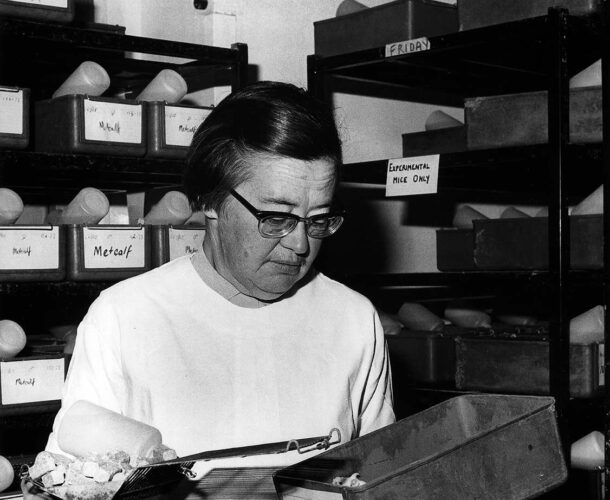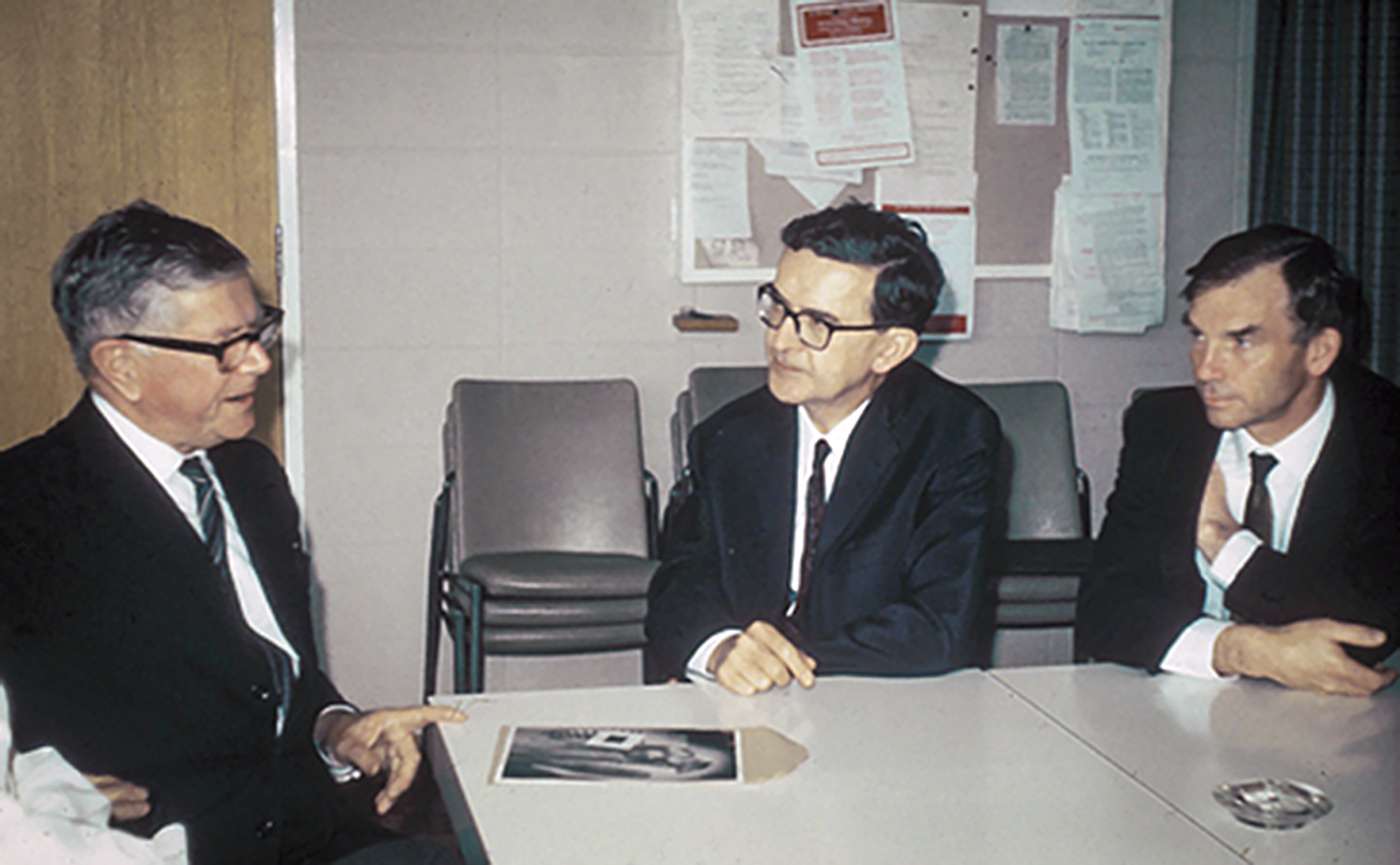Sir Frank Macfarlane Burnet and Dr Margaret Holmes show in mouse models that immunosuppressive drugs could have the power to effectively treat some types of autoimmune diseases and, if given sufficiently early in life, could actually prevent them.
Prone to autoimmune disease
In the late 1950s, Burnet becomes award of a strain of mice from New Zealand (NZB) that was prone to blood and kidney disorders that have all the hallmarks of autoimmune diseases.
He begins work with Holmes to ascertain the nature of the disease of these animals. His hypothesis was “that these mice were unduly prone to produce immune cells (immunocytes) which resisted the normal censorship mechanism that removes cells reactive against components of their own body.”1
However others in the scientific community support the popular theory that the conditions are consistent with chronic viral infection.
Solving autoimmunity not so simple
Burnet is hopeful that the mouse strain will provide evidence for his theories on autoimmunity.
“I can confess that in 1959 I thought hopefully that with a laboratory model of autoimmunity available for controlled experimentation we should have solved the nature of autoimmune disease in a year or two,” Burnet later wrote.1
I should have known better and, eleven year later, neither Margaret Holmes nor I, nor the rest of the world, has obtained any real understanding of what is happening at cellular or molecular in NZB mice.
Drugs to treat autoimmunity
Probably the most significant finding of the team in their following years of research is treating the mice with cyclophosphamide – an immunosuppressive drug – markedly increases their life expectancy.
“The result has stimulated some clinicians to test cyclophosphamide cautiously in certain types of human nephritis [kidney disease]” Burnet later says, “but it has not thrown any new light on the nature of the pathological process.”1
Clinician and scientist Dr Ian Mackay from the institute’s Clinical Research Unit will later use cyclophosphamide in combination with another immunosuppressive drug azathioprine to treat young women with autoimmune hepatitis.
By 1966, Burnet has “virtually written off the six or seven years of investigation… as an interesting experience that had thrown no real light on the nature of the autoimmune process.1
“Yet, perhaps the important thing is that, although the mechanism of how immunity goes wrong in these mice remains impenetrable, no one has any shadow of doubt the the disease is a malfunctioning of the immune system.”
Burnet correctly predicted that the animals probably “produce an antibody against a red cell antigen”.1
Researchers have since shown that NZB mice do produce autoantibodies to several different ‘self’ antigens, including red blood cells.2
1 Burnet, F. Walter and Eliza Hall Institute 1915-1965. Oxford University Press, 1971, p150-15
2 Wither, J. and Vukusic, B. Autoimmunity Develops in Lupus-Prone NZB Mice Despite Normal T Cell Tolerance. Journal of Immunology, 1998, 161: 4555–4562.






